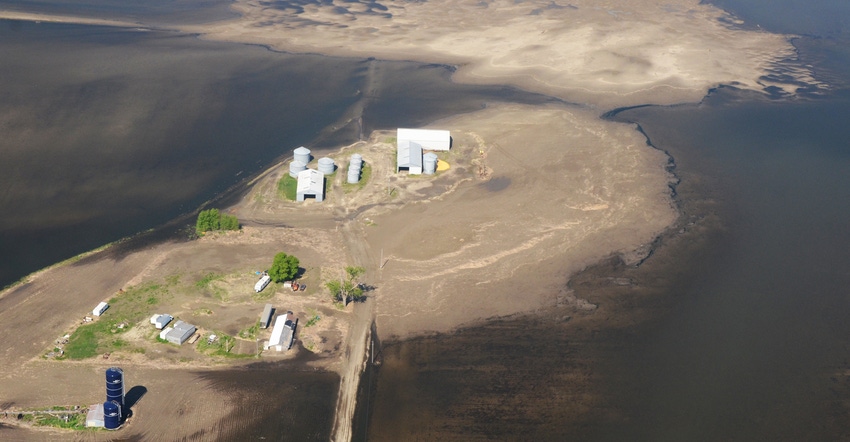
It's been nearly a year since the historic flood of 2019, but the impact of last year's devastation still lingers. I can recall my first assignment for Farm Progress — in January 2012, following the flooding along the Missouri River the previous spring and summer.
I was still a senior at the University of Iowa, covering a flood recovery meeting in Rockport, Mo., as a freelancer, but it was obvious even then that the effects would be long-lasting.
I'll never forget that first time I drove out onto the Missouri River bottom that year and saw fields with huge scour holes, resembling the surface of the moon.
Fast-forward to 2014 when, as a regional field editor for Farm Progress living in Kansas City, I spoke with several farmers along the Missouri River bottom who were recovering from the 2011 flood — a process that involved filling in these scour holes with deposited sand and silt, and often mixing it in with the native, clay gumbo soil.
In fact, by the time the 2019 "Bomb Cyclone" struck and those fields were flooded again, many farmers still were recovering from 2011.
Last year saw what's been called the most widespread natural disaster in Nebraska's history. And although it's impossible to say for certain what this year will bring, the U.S. Army Corps of Engineers and the National Weather Service already have expressed concern over flooding in 2020. Much of the river was above flood stage for most of the 2019 growing season.
It goes without saying that farmers along the Missouri River bottom have reason to be concerned — as recovering from 2019 will take years, and many have spent the offseason moving sand and debris and repairing erosion.
It's a tough thing to deal with, and while some not familiar with agriculture in the region may ask why those affected don't simply farm somewhere else, those who farm the bottomlands know the value and the legacy of the land itself is far too great to abandon. That said, withstanding recurring flooding is enough to test any farmer's fortitude.
What's more, the impact on county and state roads meant that many growers had to travel farther than usual to haul grain or even to get equipment to the field.
Of course, some things, such as infrastructure, can be updated to better prepare for events like this. Some communities, such as Winslow — a small village north of Fremont — have even discussed relocating, similar to how communities such as Niobrara have relocated in the past. However, such a big move isn't always feasible, especially for farmers and ranchers.
Time will tell how 2020 shapes up, and it's virtually impossible to say whether this spring and summer will see flooding along the Missouri River and its tributaries, or whether flooding will be as severe as it was in 2019.
Last year was a doozy, but if there's one thing 2019 taught us, it's when dealing with Mother Nature in agriculture, uncertainty is the only certainty. I think many would agree that after a year like 2019, farmers and ranchers could use a break.
About the Author(s)
You May Also Like






